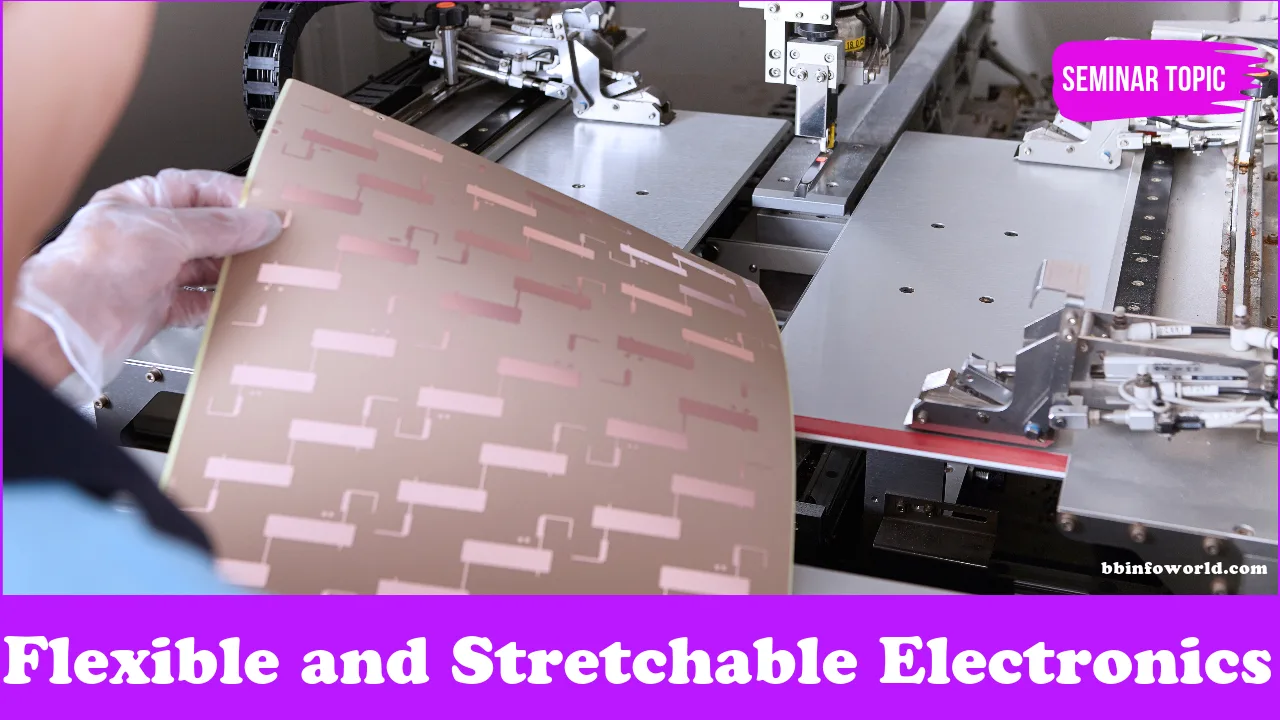
Flexible and Stretchable Electronics
Delve into the world of flexible and stretchable electronic devices, such as wearable sensors, electronic skin, and foldable displays, that offer new possibilities for design and applications.
Flexible and Stretchable Electronics:
Flexible and stretchable electronics represent a fascinating and rapidly evolving field within the realm of Electrical and Electronics Engineering. This innovative area focuses on creating electronic devices and circuits that can bend, twist, and stretch without compromising their functionality. These technologies have far-reaching implications, from wearable devices to healthcare applications, consumer electronics, and beyond.
Introduction:
Traditional electronics rely on rigid materials like silicon, which limits their form factor and application possibilities. Flexible and stretchable electronics break these barriers by utilizing advanced materials and engineering techniques that enable electronics to conform to various shapes and deformations.
Key Components and Applications:
- Wearable Sensors: Flexible and stretchable sensors can be integrated into clothing, accessories, or directly onto the skin to monitor vital signs, motion, temperature, and more. These sensors enable continuous health monitoring and provide valuable data for medical diagnostics.
- Electronic Skin (e-skin): E-skin is a thin, flexible material that mimics the functionality of human skin. It can sense pressure, temperature, and touch, making it ideal for prosthetics, robotics, and virtual reality applications.
- Foldable Displays: Flexible displays have gained immense attention with the development of smartphones and tablets that can be folded or rolled up. This technology opens new avenues for portable and space-saving devices.
- Stretchable Circuits: These circuits can stretch to several times their original length without losing functionality. They find applications in wearable technology, smart clothing, and even implantable medical devices.
Materials and Manufacturing:
- Organic Electronics: Organic materials, like conductive polymers and organic semiconductors, are used to create flexible and stretchable components. These materials can be deposited on flexible substrates using techniques such as printing or vapor deposition.
- Stretchable Substrates: Substrates like elastomers and polymers provide the flexibility and stretchability needed for these electronics. The choice of substrate impacts the mechanical properties of the final device.
Benefits and Challenges:
Benefits:
- Form Factor: Flexible and stretchable electronics offer unprecedented design freedom, enabling devices to conform to complex shapes and surfaces.
- Wearable Comfort: Wearable sensors and devices are more comfortable and less obtrusive when they can flex and stretch along with the wearer’s body.
- Healthcare Advancements: These technologies are revolutionizing healthcare with continuous monitoring, remote patient care, and novel medical devices.
Challenges:
- Reliability: Ensuring long-term reliability while withstanding repeated stretching and bending is a challenge. Materials and components must withstand mechanical stress.
- Manufacturing Complexity: The manufacturing of flexible and stretchable electronics requires specialized processes and equipment, which can increase production costs.
- Integration: Integrating components like sensors, batteries, and processors into flexible devices without sacrificing performance can be complex.
Future Directions:
The field of flexible and stretchable electronics is continuously evolving, with ongoing research focused on developing more robust materials, enhancing manufacturing techniques, and exploring new applications. As technology advances, we can expect to see even more innovative and practical uses of these technologies, from healthcare to consumer electronics and beyond.
Conclusion:
Flexible and stretchable electronics offer a glimpse into the future of electronic devices, where form and function can seamlessly coexist. From wearable sensors that enhance our health monitoring capabilities to foldable displays that transform the way we interact with technology, these innovations have the potential to reshape industries and improve our daily lives.



